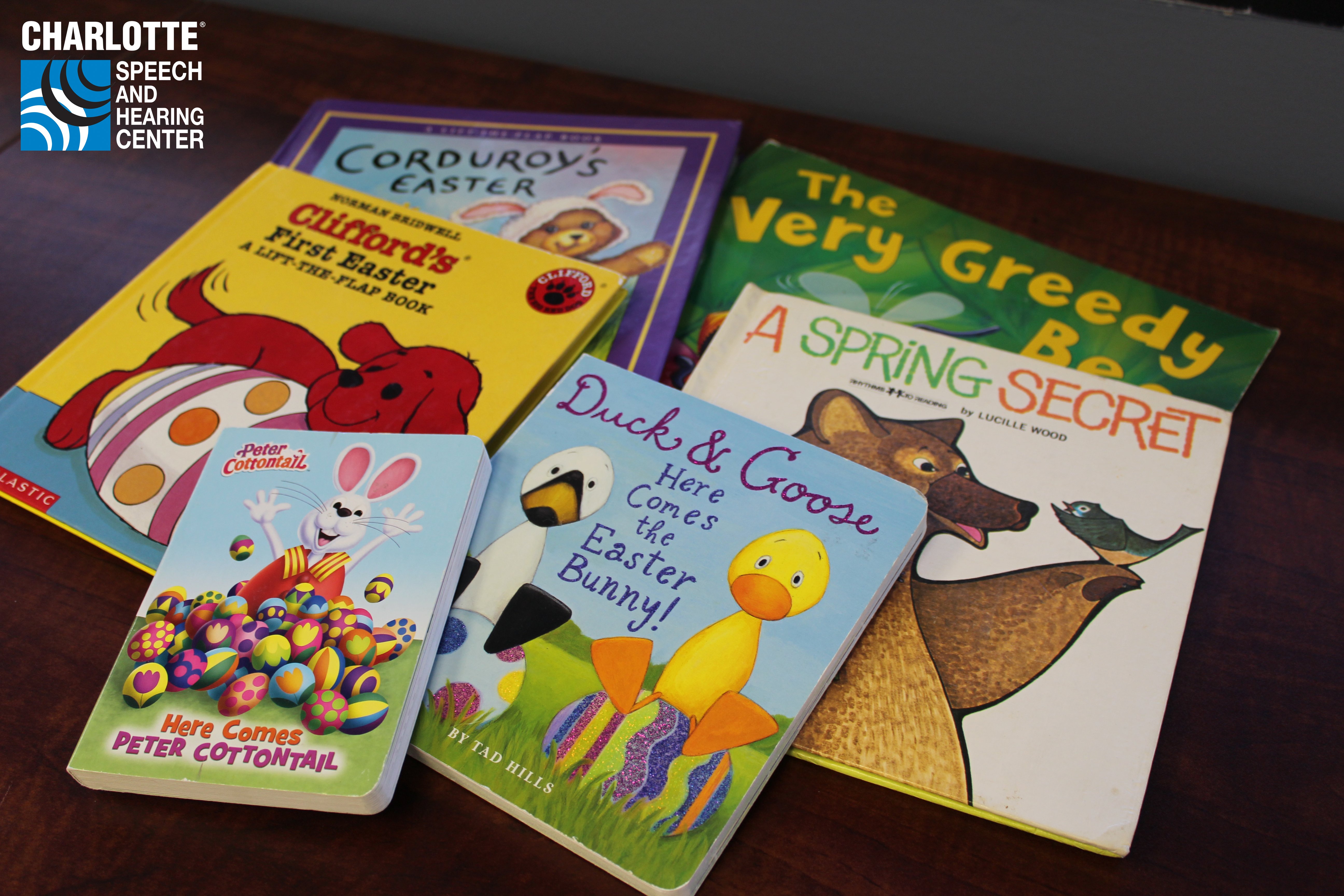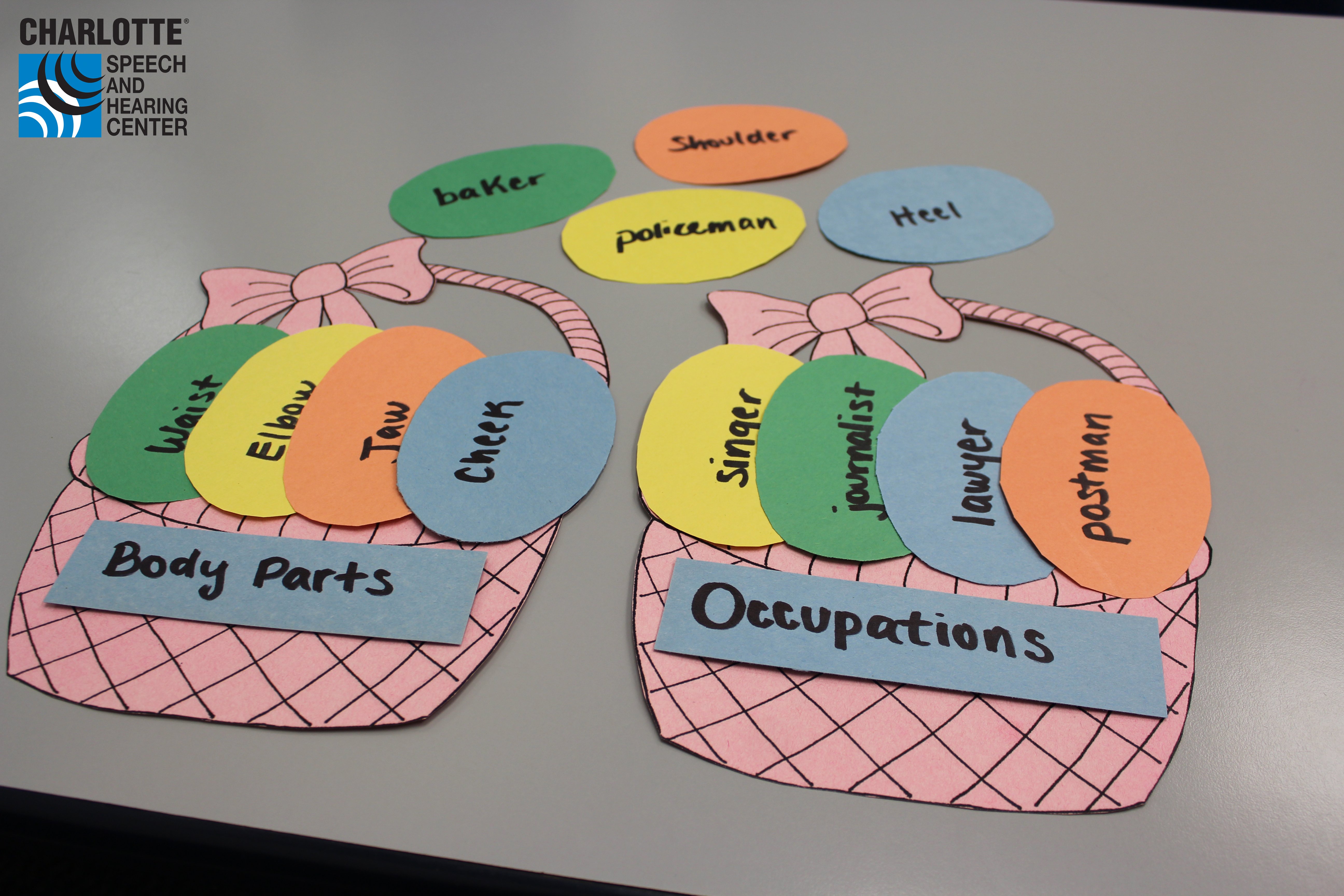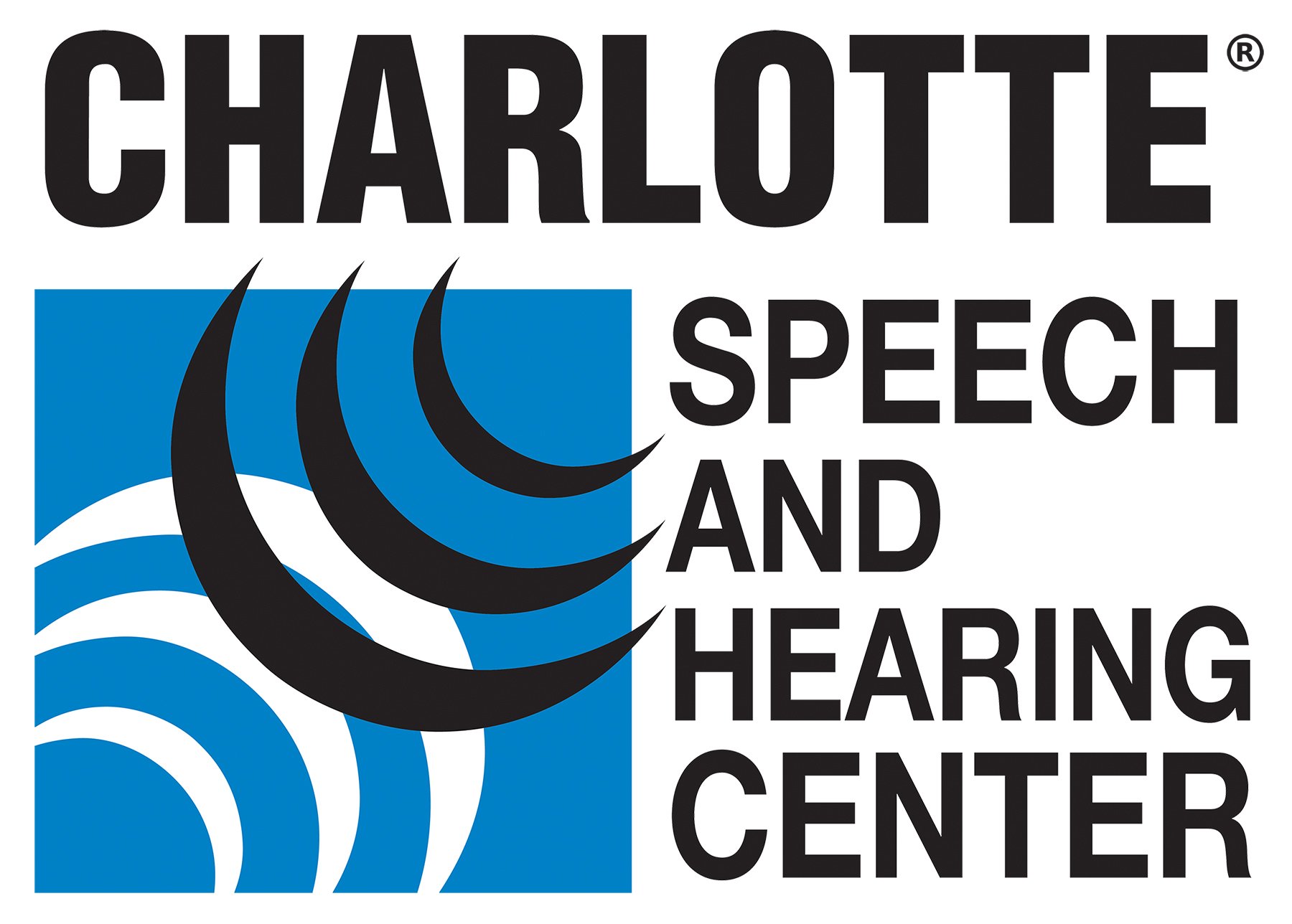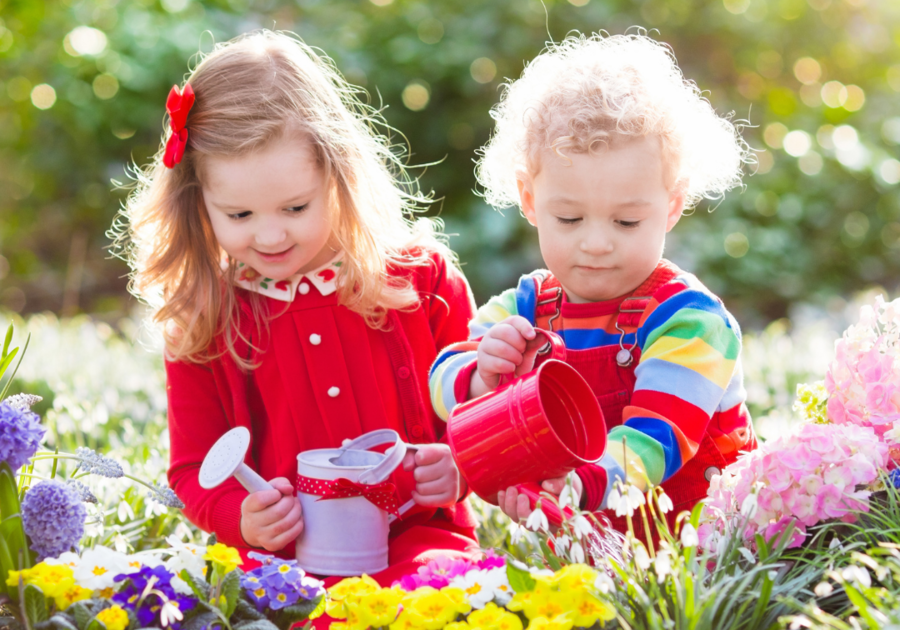My name is Angie Rikard, and I am the Director of Speech-Language Services for Charlotte Speech and Hearing Center. I have been serving children and adults in the Charlotte area for 20 years!
It is officially Spring, and Easter is just around the corner, so we wanted to share some of our favorite ideas for incorporating the season into your child’s speech and language development. There are so many things you can do at home, like reading Spring-themed books, doing outdoor activities, and even making crafts that support speech and language expansion! Here are some of our favorite ideas:
 |
Read Spring Books
There are so many Spring-themed books to choose from, but we wanted to highlight stories with rich vocabulary and strategic language goals. How to Catch the Easter Bunny by Adam Wallace is a fun read in which the Easter Bunny is very clever and escapes all the traps in the book! You can use this book to work on problem-solving, sequencing, and executive functioning skills, such as planning and describing.
Other Spring books we would recommend are Llama Llama Easter Egg by Anna Dewdney, Fletcher And The Springtime Blossoms by Julia Rawlinson, Up In The Garden, Down In The Dirt by Kate Messner, Too Many Carrots by Katy Hudson, The Night Gardener by the Fan Brothers, When Spring Comes by Kevin Henkes, and Garden by Anna Milbourne.
Articulation Hopscotch This is a great activity to try at home for children of all ages and all speech development levels! Best of all, it requires no advance prep, only chalk. Draw hopscotch squares outside and then toss a rock or bean bag to any number. Have your child say that many words with a target speech sound and then hopscotch. For example, if your child tossed a rock onto 4, she/he could say 4 words with the “K” sound (i.e., key, baking, duck, and donkey), and then they could hopscotch to the end. You can even make this a competition and keep score! If your child is working on developing certain speech sounds in school or speech therapy, it would be helpful for you to have a word list for this activity. I SpyI Spy is such an easy game and it also requires no prep! This activity can help your child build vocabulary, practice describing, and work on articulation. Have your child practice describing by “spying” an item outside and describing it to you (category, function, attributes, etc.). Encourage her/him to provide a deeper description by asking questions like “What do you do with it?” and “What is it made of?”. Then you and other family members/friends can guess the items. To target articulation, have your child describe items with their target speech sound(s) (i.e., if targeting the “T” sound, your child can spy a tree, football, or butterfly). To easily incorporate speech sounds in this game, use your chalk from the hopscotch activity to draw pictures with the child’s sound, and use these pictures as your targets for I Spy!
 |
Easter Basket Craftivity
We love this Spring “craftivity” because it is so versatile! You can use this craft for vocabulary development, auditory comprehension, rhyming, and more! All you need is construction paper, scissors, and a marker/pen. Draw a basket on a piece of construction paper and cut it out. Repeat this step so that you have two baskets. Then cut around 10-12 Easter eggs out of different colored construction paper. Now decide which skill you want to work on with your child.
If you want to work on rhyming, write a word like “duck” on one basket, and then write words that rhyme with duck on the Easter eggs (i.e., cluck, luck, snuck, truck). Repeat with different rhyming words on your second basket and remaining eggs. Have your child place the eggs that rhyme with the word in the appropriate basket.
If you want to work on categorization or vocabulary, you could write “occupations” on one basket, and then write types of occupations on the Easter eggs. With your other basket, you could write “body parts” on the basket, and then write types of body parts on the eggs. Have your child place the eggs in the appropriate basket to categorize them. This is a terrific opportunity to teach new vocabulary (I.e., mail carrier, lawyer, chin, knees, etc.).
I hope that this article inspires you to try some new activities and crafts at home that help with speech and language development! If you are interested in reading more articles like this about speech and language development, please visit Charlotte Speech and Hearing Center’s blog at https://charlottespeechhearing.com/cshc-blog/ and follow us on social media. Facebook and Instagram.

Angie Rikard
Angie Rikard is the Director of Speech-Language Services at Charlotte Speech and Hearing Center. She earned her master's degree in Communication Disorders from Appalachian State University in 1999 and has been serving adults and children in Charlotte ever since. Angie is also a singer and songwriter and mother of 2 outstanding young men.



